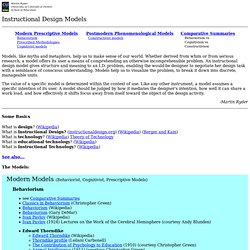

University of Minnesota. Stop Telling Students to Study for Exams - Commentary. By David Jaffee Among the problems on college campuses today are that students study for exams and faculty encourage them to do so.

I expect that many faculty members will be appalled by this assertion and regard it as a form of academic heresy. If anything, they would argue, students don't study enough for exams; if they did, the educational system would produce better results. But this simple and familiar phrase—"study for exams"—which is widely regarded as a sign of responsible academic practice, actually encourages student behaviors and dispositions that work against the larger purpose of human intellectual development and learning. Rather than telling students to study for exams, we should be telling them to study for learning and understanding. If there is one student attitude that most all faculty bemoan, it is instrumentalism. This dysfunctional system reaches its zenith with the cumulative "final" exam. But that is hardly enough.
Type Connection. Thousands of Free Lesson Plans and Educational Resources for Teachers. For Teachers – Google in Education. What Everybody Ought to Know About Instructional Design. In an earlier post, we looked at how to build better courses by trimming out some of the content.

Many of the follow-up comments and questions speak to your role as an instructional designer. In fact, it’s a question I was asked in a recent email: What is the role of the instructional designer? And how do I convey that to my clients and subject matter experts? As I was contemplating a response, I stumbled upon this video that does a great job illustrating the value of instructional design. Click here to watch video. As humans, we’re wired to learn and we’re always learning. Learning happens through our experiences and through the things we see and hear. A formal course intrudes on the learner’s natural learning path. The video above is an excellent illustration of some key points concerning instructional design. Some might try to understand the big picture and spend time figuring out where they’re at and why they’re in two teams. Now let’s flip it around a little. Instructional Design.
Scaffolding helps to build a framework for the learners What is Instructional Design?

Instructional Design is defined as “a systematic process that is employed to develop education and training programs in a consistent and reliable fashion” (Reiser, Dempsey, 2007). In addition, it may be thought of as a framework for developing modules or lessons that (Merrill, Drake, Lacy, Pratt, 1996): increase and enhance the possibility of learning makes the acquisition of knowledge and skill more efficient, effective, and appealing, encourages the engagement of learners so that they learn faster and gain deeper levels of understanding In a nutshell, instructional design can be thought of as a process for creating effective and efficient learning processes. While other models are aimed at specific learning processes, such as van Merriënboer's 4C/ID model, which is used when the learners must master complex problem solving. Differences Between Instructional Design and Instructional System Design 1. Instructional Design Models. Instructional Design Models Models, like myths and metaphors, help us to make sense of our world.

Whether derived from whim or from serious research, a model offers its user a means of comprehending an otherwise incomprehensible problem. An instructional design model gives structure and meaning to an I.D. problem, enabling the would-be designer to negotiate her design task with a semblance of conscious understanding. Models help us to visualize the problem, to break it down into discrete, manageable units. The value of a specific model is determined within the context of use. -Martin Ryder Some Basics What is design? See also... The Models: Comparitive Summaries. Instructional Designer Resources and Community Collaboration. Instructional Design.